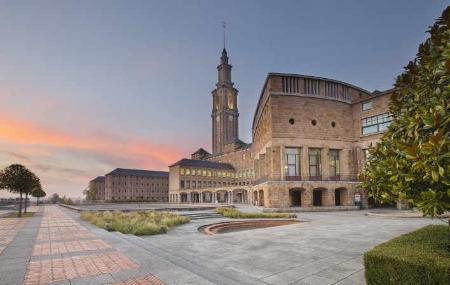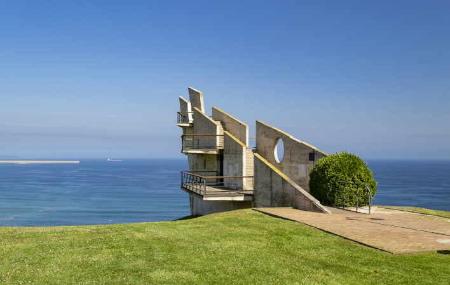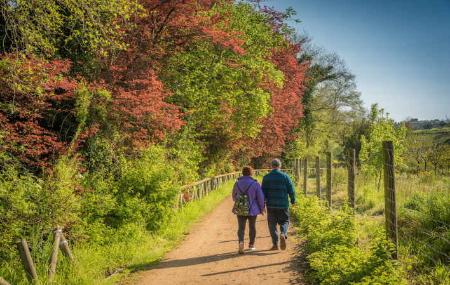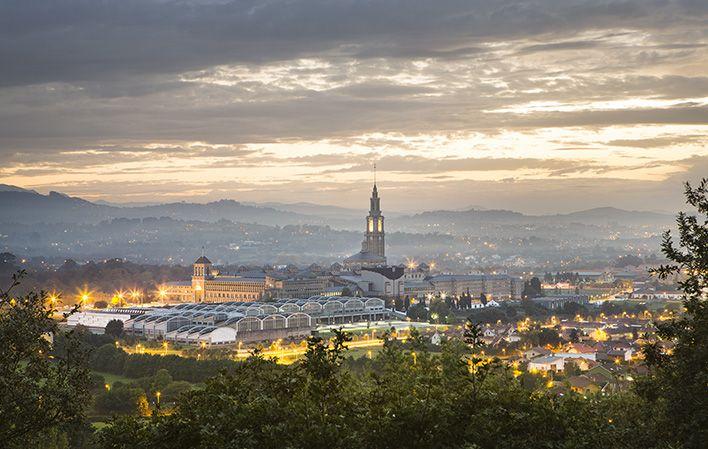
Gijón

Gijón/Xixón is a modern and plural city, forged between Roman camps and shipyards, which every day looks out onto the Muro de San Lorenzo with a seafaring vocation and the same need to open up to the world that Jovellanos had when he wrote in Latin. It has a seafaring, working class and seaside soul, it combines cider and "pescau" with the industrial legacy, the nautical spirit and the pomaradas; it strolls among fair pavilions, port facilities, university campuses and large cultural spaces. It unfolds a street map full of surprises and opens up to beautiful coastal paths, rural parishes and greenways where nature can be breathed deeply.
History and culture of Gijón
Its past is one of the most intense chapters in the great story that is Asturias. It holds the title of the oldest city in the Principality, with two thousand years of documented history and roots that go back to the Neolithic period, as can be seen in the necropolis of Monte Deva. The Campa Torres Archaeological Park preserves a hillfort that marks the transition from indigenous culture to Romanisation. And not far away, the Roman Villa of Veranes shows us how a rural elite lived in the last centuries of the Empire.
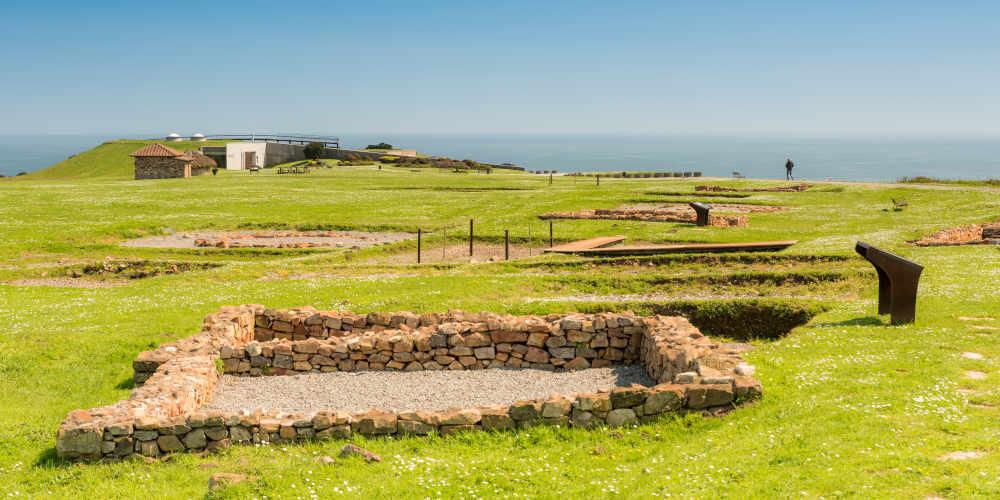
Roman city, working class city, cosmopolitan city
The strictly urban chronicle of Gijón/Xixón starts at the Cerro de Santa Catalina, a promontory that penetrates the Bay of Biscay and where the Romans laid the foundations of the ancient Gigia. This strategic isthmus, surrounded by a defensive wall of more than 900 metres, was the origin of the city and later of the Cimadevilla/Cimavilla neighbourhood. The public baths, now the Campo Valdés Roman Baths Museum, bear witness to this period, with well-preserved rooms from the frigidarium to the caldarium, and panels and recreations that bring us closer to the Roman vision of bathing as hygiene, pleasure and engineering.
This museum is located at the foot of the Church of San Pedro, a spiritual beacon at the western end of the San Lorenzo Wall. The current church is built on top of another from the 15th century, the century in which the Catholic Monarchs authorised the construction of the first port in Gijón. At that time, Cimavilla was already a neighbourhood of fishermen, merchants and nobles with coats of arms, which grew over the centuries, leaving behind a remarkable architecture: the Valdés Palace (16th century), the Clock Tower ( 16th century, rebuilt in the 20th century), the Casa de Nava (18th century) or the Revillagigedo Palace (18th century). The chapel of La Soledad, which housed the guild of sailors, and Nuestra Señora de los Remedios, where Gaspar Melchor de Jovellanos, a key figure of the Spanish Enlightenment, whose legacy is kept in the Jovellanos Birthplace Museum, are also preserved.
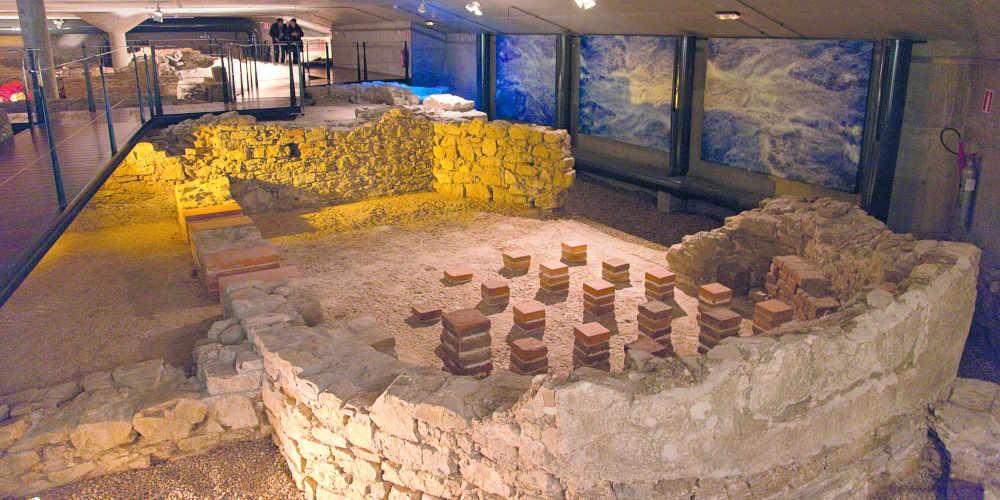
Since the mid-19th century, Gijón/Xixón has been consolidating its position as an industrial centre in Asturias. In Cimavilla, the Tobacco Factory was a milestone in female employment: the famous cigarette workers were pioneers of factory work and the workers' struggle. But the big change came with coal. The railway linked the city with the mining areas and, in 1907, the port of El Musel(opens in a new tab) was inaugurated, a key to exports. Factories, shipyards and citadels such as Celestino Solar's, now an open-air museum with 24 houses lined up and common courtyards, grew up around it. The expansion pushed the city westwards, giving rise to neighbourhoods such as La Calzada, El Natahoyo or Jove, inhabited by a diverse working class (dockers, loaders, metalworkers), which was the seed of the Asturian workers' movement - much of this historical episode can be seen in the Asturias Railway Museum -. In the 1950s, the construction of the Universidad Laboral symbolised the union between work, discipline and technical training at the service of the State. Today, this building (the largest in Spain with 270,000 m²) is an example of how industrial identity can be recycled into creative energy and cosmopolitan attitude.
Cultural Gijón
The Universidad Laboral is, without a doubt, the colossus of Gijón's cultural landscape. Converted into the "Laboral City of Culture", its monumentality hosts a creative hustle and bustle with large halls for the performing arts and concerts of all kinds. With classrooms, sets and residences for artists, thinkers and apprentices of all kinds. Annexed to the complex, Laboral Centro de Arte y Creación Industrial acts as a sensitive antenna for art, technology and today's society, with exhibitions that question, provoke and, often, unsettle. Here culture is not exhibited, but rather experienced.
Another flagship of Gijón's cultural life is the Teatro Jovellanos(opens in a new tab). Its elegant façade and Italian-inspired interior make it unmistakable, but what really defines it is the variety and quality of its programme: theatre, dance, opera, world music and something for all audiences. It is also the main venue for the Gijón International Film Festival(opens in a new tab) (FICX), which takes place in the second half of November. A festival that has evolved since 1963 to become a key platform for international independent cinema, without ever losing its free and provocative spirit.

The Semana Negra(opens in a new tab), which takes place in July on the former Naval Gijón site, is one of the most consolidated summer events in Asturias, and a national reference in noir literature. But it goes far beyond the genre: writers, fairgoers, concerts, debates and pulperías coexist in harmony, like pieces of a puzzle devised by Paco Ignacio Taibo II, who defined the event as follows: "a revolutionary artefact disguised as a fair".
Throughout the year, Gijón/Xixón hosts many other proposals for all tastes and audiences. In February, FETEN(opens in a new tab), the European Children's Performing Arts Fair, fills the city with theatre, puppetry, dance and circus. May brings the L.E.V.(opens in a new tab), the epicentre of electronic and avant-garde audiovisuals. Also in spring, the Gijón Sound Festival(opens in a new tab) takes over the streets and venues with concerts by leading national and international bands. Metrópoli(opens in a new tab) opens the summer with a multidisciplinary proposal: music, comics, video games, exhibitions and family entertainment. In July, Tsunami Xixón brings together the best of alternative rock, and at the end of the month, the Festival Ye-Yé(opens in a new tab) keeps the spirit of the sixties alive with lambrettas, sideburns and impeccably buttoned shirts.
In addition to this agenda, the city's art galleries and other cultural centres also have something on offer. The Museu del Pueblu d'Asturies is a point of reference for Asturian ethnographic conservation - it also houses the Bagpipe Museum -. The Nicanor Piñole Museum offers intimate and traditional works by this great painter from Gijón. The Barjola Museum focuses on contemporary art, and in the Evaristo Valle Museum(opens in a new tab), art, garden and architecture coexist with great elegance. All this is completed with temporary exhibitions at the Antiguo Instituto(opens in a new tab) and the Palacio de Revillagigedo, two key spaces in Gijón's cultural life.
Beaches and outdoor activities
Perhaps it is the beaches that contribute most to the character of its citizens, but, although all the people of Gijón boast of being "playos", this is a gentilicio that alludes to those born in Cimavilla: a seafaring neighbourhood without equal, with many famous people per square metre, and with its own sardonic way of speaking.
The urban beaches of Gijón
The urban beaches are the city's playful backdrop. San Lorenzo, with its shell-shaped profile and its extensive wall of more than a kilometre and a half, is a perpetual movement that goes from the popular meeting point of the Nautico or the Escalerona, to the end of the Mayanes, where the most expert surfers look for El Mongol - an elusive and legendary wave. Swimmers (some in the middle of January), leisurely strollers, cyclists, classic skaters and skateboarders mingle with tourists in a daily choreography that never stops. In addition, there is a proliferation of schools and rental services for surfing, bodyboarding and paddle surfing, with activities organised for beginners or to improve your level.

A little further west, the Poniente beach, an artificial sandy area, offers a family atmosphere, calm waters and a children's playground. It connects with the Muro de Poniente promenade, ideal for walking, skating or cycling. Nearby, the Gijón Aquarium shows marine ecosystems from all over the world, with more than 250 species, including sharks and penguins. In this area it is also possible to enjoy a complex with therapeutic and leisure use of seawater. Further west, between El Natahoyo and La Calzada is El Arbeyal, a neighbourhood beach with green areas, which is enjoyed as a public square by the sea.
The marina of Gijón(opens in a new tab) offers other options beyond bathing: from renting boats, kayaks, or jet skis, to flyboarding or banana boat adventures. There is also space for sport fishing or diving, and sailing maintains its tradition and its summer courses at the historic Real Club Astur de Regatas(opens in a new tab), one of the oldest in the country.

Routes, viewpoints and natural areas
Beyond the city centre, Gijón's coastline hides many wild corners. To the east, beaches such as Peñarrubia, surrounded by cliffs and frequented by naturists; Serín and La Cagonera(opens in a new tab), coves ideal for underwater fishing; O Estaño, with its dark sand and its Pozo del Cura, a natural rock pool. These enclaves can be reached by following the Senda del Cervigón, a coastal path of about ten kilometres that winds its way to the beach of La Ñora. The path starts in the eastern part of San Lorenzo, in El Rinconín, next to the sculpture of the Mother of the Emigrant - the endearing "Lloca" - whose open arms are still waiting for those who have left. Half an hour's walk away is the viewpoint of the Parque de la Providencia: it looks out over the Bay of Biscay and is one of the most impressive balconies on the Gijón coast, together, of course, with the Elogio del Horizonte(opens in a new tab), a tourist symbol of the city. Located at the top of the Cerro de Santa Catalina, where the wind swirls and the seagulls dictate, this monumental work by Eduardo Chillida is the most recognisable symbol of Gijón/Xixón. An "ellipsoid" structure, ten metres high, which frames the seascape and which, according to its author, favours the encounter between human beings and the cosmos.
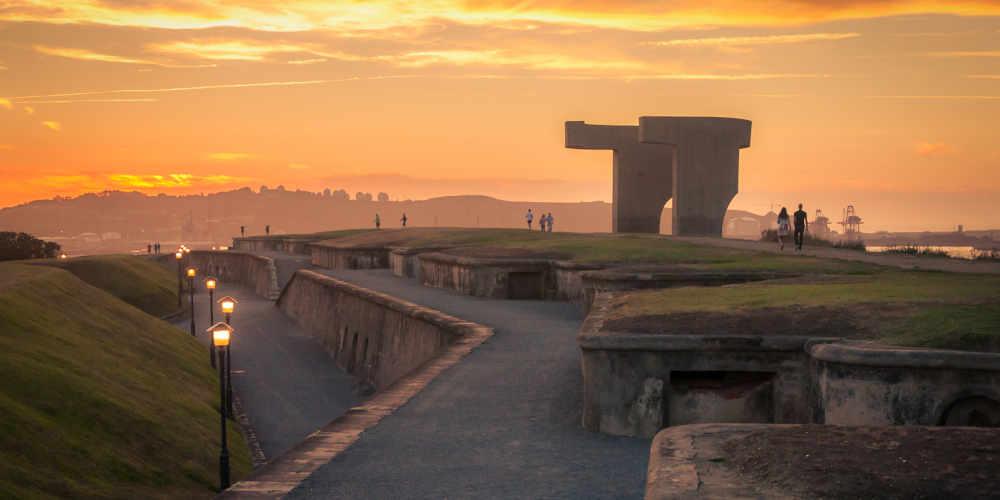
Towards the interior of the council, the Senda del Piles runs for 19 kilometres from El Kilometrín - in the vicinity of the El Molinón football stadium - to the parish of Vega, combining urban stretches with riverside woods. It links up with the La Camocha Greenway, which takes advantage of the old mining route between the La Camocha well and Veriña. From Tremañes you can also follow a 25-kilometre circular route that crosses industrial areas, meadows and natural landscapes, with the possibility of taking a branch and climbing Pico el Sol, from where you can see Gijón/Xixón, Oviedo/Uviéu and the Avilés rasa. It is an ideal route for cyclists, like so many others that cross the 24 rural parishes(more information here). And for those looking for history on the way, the Cenero Archaeological Route - barely four kilometres long - links the abbey of Cenero, known as the "Romanesque cathedral of Gijón" (1260), with the Roman villa of Veranes. This route is part of the old Silver Route and combines heritage and beautiful landscapes.
In the parish of Cabueñes, Gijón/Xixón mingles with the countryside without ceasing to be a city. The Coastal Route to Santiago (which descends from the Alto del Infanzón) passes through here, and here you will find two very special places: the Atlantic Botanical Garden, which brings together the flora of the Atlantic world for educational and scientific purposes; and the Carbayera de El Tragamón, a hundred-year-old oak grove covering more than four hectares. Nearby, the La Llorea Municipal Golf Course, which is enjoyed by amateurs of all levels.

Tips to enjoy Gijón
Gijón/Xixón, with some 270,000 inhabitants, is the most populated city in Asturias. It has good rail connections, city buses and an expanding network of cycle paths. On foot, it is friendly and accessible: nothing is too far away. However, if you are looking for a typical city centre, you will soon discover that there is not one centre, but many. It is an octopus city, which spreads its energy through various urban tentacles. The wide Paseo de Begoña and the Muro de San Lorenzo, with its throngs of pedestrians, are the centre. Cimavilla - a seafaring and partying neighbourhood, full of chigres and terraces - and the Marina, with its popular Letronas, are also the centre. The modernist streets of the bourgeois Ensanche (Marqués de San Esteban, Jovellanos, La Merced or Cabrales) and the shopping streets of Corrida, Uría or Los Moros are the centre. Also the Plaza del Parchís, the Humedal and the Plazuela de San Miguel. Even neighbourhoods such as La Arena, El Llano, El Natahoyo or La Calzada, which are full of life, shops and facilities, are being "focussed on". The same in the Isabel la Católica Park, with more than 150,000 m² of gardens, and in the area around La Guía, with its fairgrounds and sports facilities. Even the rural parishes feel like a centre, because here, as in the case of La Laboral, theatre performances, concerts or audacious exhibitions are also organised. In the "outskirts" there is a proliferation of faculties, shopping centres, sports circuits or "llagares" with plenty of espichas and diners, as is the case in Veriña, Bernueces, Somió or Cabueñes.
Gijón/Xixón offers plenty of reasons in any season, even with the celebration of the Antroxu ( Festival of Tourist Interest of the Principality), a Gijón-style carnival, where the guasa is in strict mourning accompanying the sardine and the city is transformed into a stage for masquerades, charangas and parades. For several weekends a year we can also enjoy the Gijón Artisan and Ecological Market, the only one of its kind and also declared a Festival of Tourist Interest in Asturias.
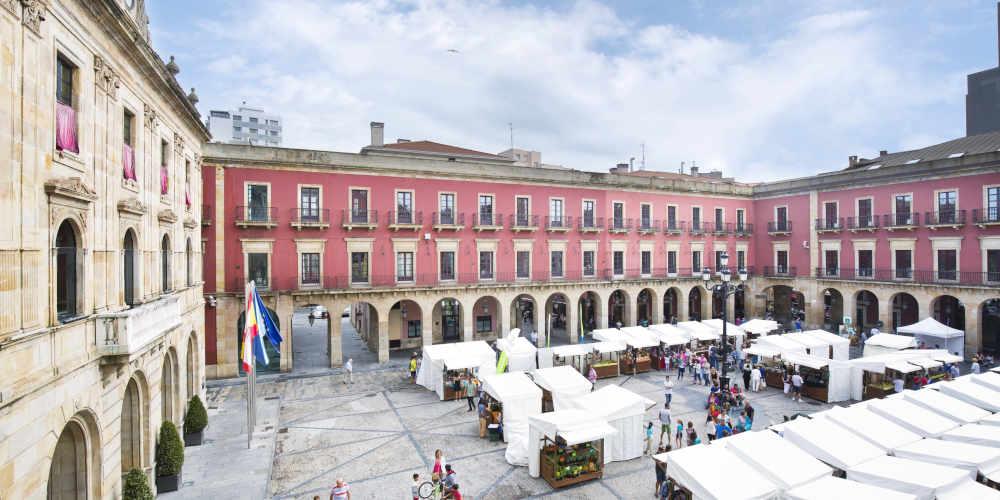
When summer arrives, Gijón/Xixón is at its best. San Lorenzo beach takes on its full meaning and the sea breeze permeates everything. During the first fortnight of August, the Luis Adaro exhibition centre hosts the Asturias International Trade Fair, an event with a century of history where commerce, business, leisure and gastronomy come together in a bustling and festive atmosphere. In mid-August, the Semana Grande (Big Week) offers free concerts, folklore, gastronomy, aerial displays, fireworks and cider in abundance. And at the end of August comes the Natural Cider Festival (a Festival of Tourist Interest in the Principality), where thousands of people pour cider in unison on the Poniente beach to beat the Guinness World Record. The International Show Jumping Competition also takes place during these days, a week of high level equestrian competition in the Las Mestas Sports Complex.
To sleep: family-run, historic, unique or large chain hotels; centrally located flats and rural houses with soul. Not to sleep: the "indi" spirit of the Xixón Sound of the 90s is still alive in the concerts programmed by venues such as Acapulco, Albeniz, Savoy or Gijón Arena. And for drinks, the atmosphere is at Fomento, the Marina and Cimavilla. To eat: there is always a table, good set menus, well-served cider bars, top restaurants, haute cuisine. First class material from the fish market, own provisions or cetáreas: chicharrinos, bocartinos, parrochines pulpín de pedreru con patatines, calamar de potera, oricios (sea urchins), llámpares, chopa a la sidra... And dessert: arroz con leche, casadielles, charlota or tarta gijonesa (sponge cake covered with nougat cream).
On Sunday morning you should take a stroll around the flea market, the largest street market in Asturias; a feast for early risers, the curious and bargain hunters. It takes place in the vicinity of El Molinón, the oldest football stadium in Spain, which we should enter on a Sunday afternoon to enjoy one of the most loyal fans in the country.
In short... Gijón/Xixón is that good book that we never want to end.
Images
Map
What to see
- Top ten things to see and do in Gijón.
- The City of Gijón/Xixón.
- Roman Gijón: Thermal baths, Roman Villa of Veranes and Campa Torres.
- Natural Gijón: Botanical Garden, San Lorenzo Beach and green paths.
- Gastronomic Gijón: Gijón Goloso, Gijón Gourmet and the Cider Route.
- Cultural Gijón: La Laboral, Museo Casa Natal de Jovellanos(opens in a new tab) and Teatro Jovellanos(opens in a new tab).
- Gijón is sea: Aquarium, Forus Gijón(Poniente Beach) and nautical activities.

